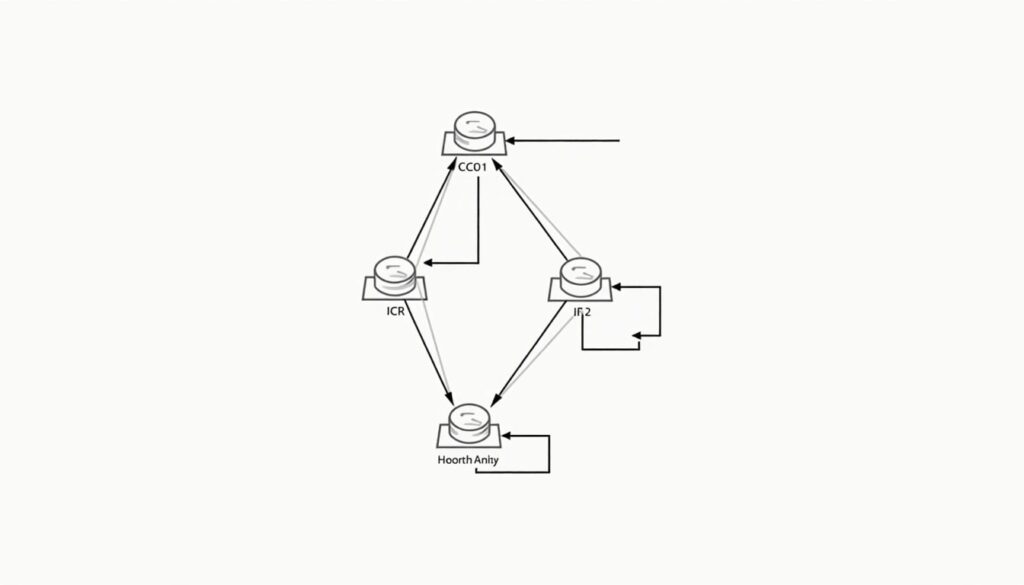Introduction
Reverse Route Injection (RRI) is a custom in Cisco ASA firewalls that dynamically injects routes into the routing table for remote VPN clients or sites. It allows you to avoid manual route configuration between networks while providing passthrough communication.
RRI makes routing easier and more efficient, regardless of whether you have a small business network with routing or in a large enterprise.
The Importance of Reverse Route Injection
MANUAL ROUTE MANAGEMENT IS TIME CONSUMING AND ERROR PRONE IN AN MESSY NETWORKING WORLD. Reverse Route Injection does this automatically, so VPN clients or remote sites are always reachable. The RRI process and sends periodically calculated routes It helps reduce administrative overhead and improve network reliability.
Reverse Route Injection on Cisco ASA – How does it Work?
Cisco ASA enforces RRI via the reverse-route directive. Upon the establishment of the VPN tunnel, the ASA will automatically become aware of the remote network via route injection into the routing table. This route is what allows traffic going to the remote network to be routed through the VPN tunnel accordingly.

Reverse Route Injection in Short
- Automated Routing: Forget about manually entering routes—RRI has you covered.
- Scale: Configuring several VPN links is not difficult with it.
- Enhanced Reliability: Provides reliable connectivity to remote networks.
- Decreased Errors: Reduces misconfigurations & network downtime.
Reverse Route Injection in Cisco ASA
Here is how to enable RRI on a Cisco ASA:
- Go to ASA CLI or ASDM interface
- Head to the VPN config area.
- Reverse-route command. (Within the VPN tunnel group)
- Use the show route command to verify the routes
Cisco ASA Reverse Route Injection Use Cases
RRI is very helpful in situations like:
- Employees working from home: Remote access VPNs
- Additional site-to-site VPNs link branch offices.
- Applications running in cloud that require secure connectivity
The common challenges of Home Injection visit
But while RRI is a game changer, it’s not without its challenges:
- Route overlap: Make sure there are no conflicting routes in the routing table.
- Performance Considerations large-scale deployments may need to be optimized.
- Compatibility: Ensure all devices support RRI capability.
The Reverse-Route Command in Cisco
crypto-map, and applies it to each packet coming from the external, the destination address would have been enabled for the reverse route command. This command will cause the ASA to automatically add a route for the remote network or client once the VPN tunnel is established. The migration of network entries on larger networks is done automatically and route entries are moved seamlessly negating the need to input each route manually, thus cutting down on both manual steps and the potential for errors in the process.
Example: Reverse-route command is useful mainly for remote access VPNs and site-to-site VPNs so that proper routing information is maintained.

We will first understand what Reverse Route Injection is in Cisco ASA.
Reverse Route Injection (RRI) — RRI is a functionality of the Cisco ASA firewalls that injects routes dynamically into the routing table of the remote VPN clients or networks. When the VPN tunnel comes up, RRI creates a route for the remote endpoint so that traffic goes through the tunnel. It reduces time and prevents errors by removing the need for setting up routes manually.
RRI is especially beneficial in scenarios like remote access VPNs and site-to-site VPNs, it where consistent and accurate routing information is crucial for uninterrupted communication.
FAQS
What is a reverse route?
The reverse route, also known as the reverse path or outbound journey, is used for the return trip of a journey that may use the same distance.
What is an example of reverse routing?
Reverse routing is when you go from one place to another and come back the same way to where you started for example you come Lahore to Islamabad and then back to Lahore the same way.
What is enable reverse route injection?
Reverse Route Injection (RRI) is the ability for dynamically learned routes to be injected back into a routing table so that return traffic can flow properly through the network.
What is reverse route injection ASA site to site VPN?
RRI adds the routes to the routing table automatically when the site-to-site VPN is up, thus allowing packets to flow across the VPN route created
What is the difference between reverse and reversal?
Reverse also means to go backward or change direction; a reversal is the act or result of going back, with a complete change or setback.

